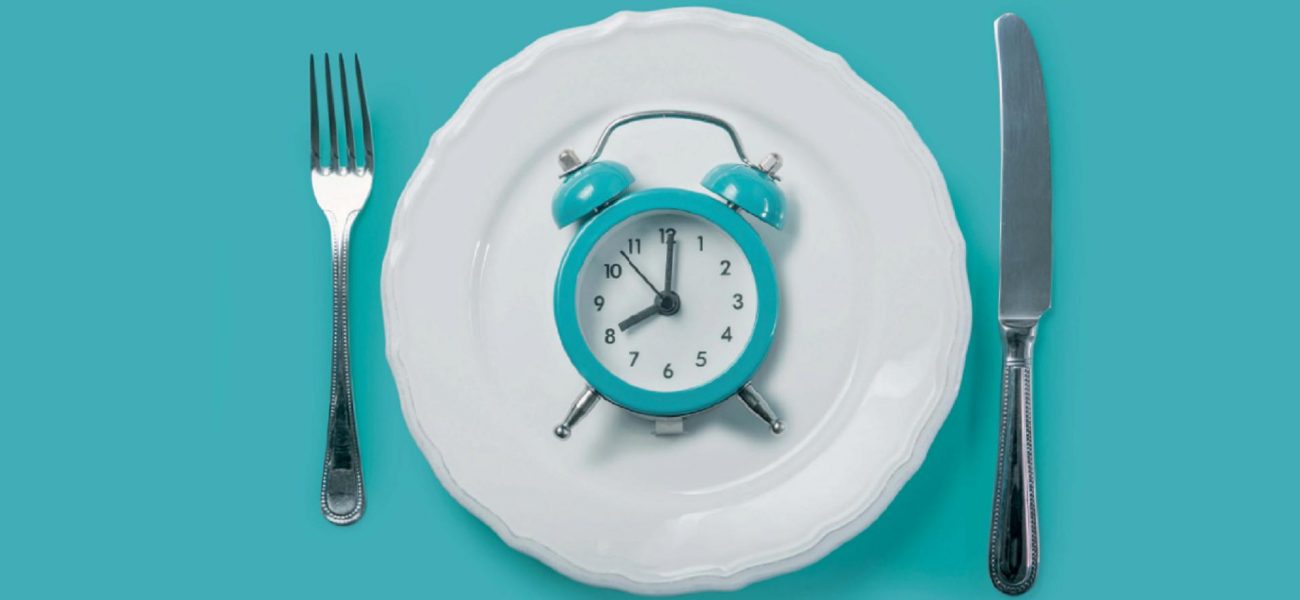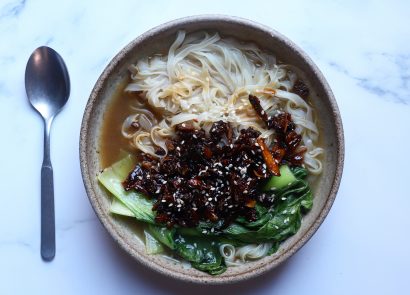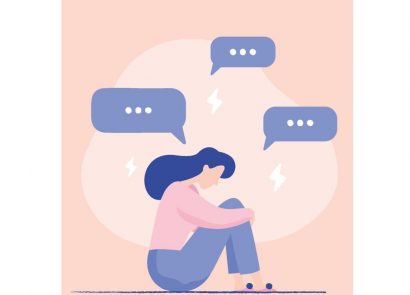Want to kickstart your healthier lifestyle? The key to a new diet could be as simple as intermittent fasting. The idea behind the 16:8 diet is simple – you fast for 16 hours a day and eat in an eight-hour window. Before you turn your nose up at going hungry for so long, you’ll be glad to know that most people plan their eating window for between 10am and 6pm, so you’re actually asleep for most of the fasting. A new study, published in the journal Nutrition and Healthy Aging, found that 23 men and women who followed the diet for 12 weeks lowered their blood pressure as well as consuming 350 fewer calories a day than the control group. Interested? We called in the experts to find out more.
Does it work?
“There has been a lot of new research coming out about the 16:8 diet,” says nutritionist Shona Wilkinson.“Small studies are showing promise but many people are following the diet already with great results. We know that our digestive systems are primed to eat at certain times of the day. This means that we cope with food intake better then. We also know that, as part of evolution, we only ate during light hours and stopped eating during the dark. Because of this evolutionary aspect, both our saliva production and our digestive enzymes slow down, and our stomach acid levels go up. This is why eating at night can lead to issues with digestion and exacerbate any problems with certain foods. So, it seems, when you eat can be just as important as what you eat.”
Not only can 16:8 help with weight loss, it also has other benefits. “Fasting and then eating a healthy diet during the ‘eating hours’ may re-balance your body’s hormonal function, give the pancreas a rest, stamp down inflammation and promote natural healing and repair,” says nutritional therapist Olivier Sanchez. “It may also prevent chronic illnesses such as diabetes and cardiovascular disease.”
How is this different to the 5:2?
As you may know, the 5:2 diet, popularised by Dr Michael Mosley, is another type of intermittent fast. The 5:2 diet involves eating normally for five days a week and then consuming just 500 calories on two (non-consecutive) days. “I think that 16:8 is easier and more realistic for most people and it’s simpler to integrate into daily life,” explains Rob Hobson, nutritionist at Healthspan (robhobson. co.uk). “Two days of eating just 500 calories is tricky and very restrictive. It often means that you need to skip a meal across the day.”
“The fact that you can effectively be asleep for most of the fasting time on the 16:8 makes it simpler. The 5:2 is not for everyone. The fasting days can be hard to fit around a busy lifestyle, especially if you like to train a lot or have a hectic work schedule. Fasting days can cause tiredness and a lack of concentration, which can have an impact on your life.”
Is it safe?
It sounds too good to be true, so is it a healthy way to eat? “Yes, once you have the timings right, you can easily fit three healthy meals into your eight hours,” says Rob.
However, there are some things to consider. “When following a diet, whichever it may be, you need to make sure that the diet is right for you, and it is adapted to your needs and your body,” says Olivier. “If you rapidly feel unwell then the diet might not be for you.”
Are there any potential problems?
“Getting the timings right is key. The easiest thing about this diet is that you are asleep for most of the fasting,” says Rob. “One problem is that, if you end up eating late, you could be waiting until mid afternoon to eat again. This is going to be tricky as hunger sets in. These diets also rely on a calorie deficit and you can still over eat in the space of eight hours. However, not all calories are created equal, so you need to focus on filling your diet with lots of highly nutritious foods.”
Another issue may be preparation. “You will need to be organised,” says Olivier. “Breakfast cam be prepared the evening before, so that you don’t feel like eating out of the fridge while making breakfast. Snacks and meals must be planned, and timing is also very important. You may want to have smaller regular meals, rather than big meals. The last thing you need is to overwhelm your digestive system and bring with it a wide array of symptoms. By focusing on nutrient-dense and antioxidant-rich food, you can promote natural healing and repair. You can also reach a more optimal state of health and cognitive functions.”
OK, I’m sold! How do I get started?
“The best way to follow the 16:8 diet is to stop eating at 8pm and not eat again until 12pm the next day,” says Shona. “This is manageable for most people. In the morning, you can have a cup of tea or coffee, or drink of water, but not any food (this includes avoiding drinks such as smoothies and juices).”
Rob agrees, adding that eating this way usually means limiting your intake to three daily meals. Although, you could try eating more smaller-sized meals if this is how you prefer to eat. “This is the simplest of the fasting methods and normally means eating your evening meal a little earlier and breakfast later. Water, coffee and herbal teas can help to stave off hunger pangs in the mornings.”
Want to give it a go? “Try doing it twice a week to begin with and then incorporate it into your diet as much as you want,” advises Shona. “You can follow it every day if you’d like. Most health professionals seem to agree that this is a healthy approach to eating with very little negatives. Although you may have to rush that dinner out with your friends! I am a strong advocate of the 16:8 diet but would still want people to eat in a healthy manner when they do eat.”




















